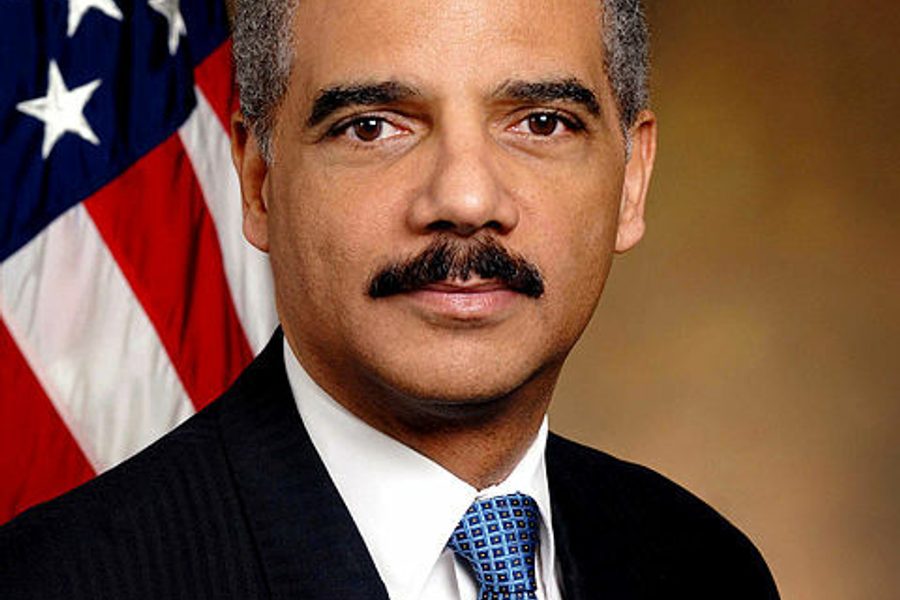Sixty Years After Brown v Board of Education, Racism Persists in Prison System says Attorney General
George Lavender

Attorney General Eric Holder used the 60th anniversary of Brown v Board of Education, to address “the struggle that still must be waged” for racial justice in the criminal justice system. On May 17th 1954 the Supreme Court overturned the doctrine of “separate but equal” schooling, established almost six decades earlier under Plessy v Ferguson.
Since the era of Brown, laws making classifications based on race have been subjected to a legal standard known as “strict scrutiny.” Almost invariably, these statutes, when tested, fail to pass constitutional muster. But there are other policies that too easily escape such scrutiny because they have the appearance of being race-neutral. Their impacts, however, are anything but. This is the concern we must contend with today: policies that impede equal opportunity in fact, if not in form.
Speaking to students at Morgan State University, Maryland, Holder returned to an issue he himself has previously referred to as “the school-to-prison pipeline.”
Codified segregation of public schools has been barred since Brown. But in too many of our school districts, significant divisions persist and segregation has reoccurred – including zero-tolerance school discipline practices that, while well-intentioned and aimed at promoting school safety, affect black males at a rate three times higher than their white peers.
In an apparent reference to the public outcry over comments by Clipper’s owner Donald Sterling, Holder cautioned against focussing solely on overt displays of racism, and instead urged his audience to look at the subtler forms of racism that still exist. The Attorney General took issue with Chief Justice John Roberts, for arguing that “the path to ending racial discrimination is to give less consideration to the issue of race altogether.” Quoting another Supreme Court Justice, Sonia Sotomayor, Holder suggested that “(T)he way to stop discrimination on the basis of race is to speak openly and candidly on the subject of race.”
It is not the first time that the Attorney General has spoken publicly about racial inequality and the overuse of prison in the criminal justice system. Holder has made it clear that he is seeking to reduce the federal prison population and bring about “fairer” sentencing, particularly for drug offenses. Last year, he gave a similar speech to the American Bar Association’s House of Delegates in which he declared “too many Americans go to too many prisons for far too long and for no truly good law enforcement reason.”
..in our criminal justice system, systemic and unwarranted racial disparities remain disturbingly common. One study released last year by the U.S. Sentencing Commission indicated that – in recent years – African-American men have received sentences that are nearly 20 percent longer than those imposed on white males convicted of similar crimes. Another report showed that American Indians are often sentenced even more harshly.
Under Holder, the Justice Department has made some efforts to reverse minimum sentencing guidelines originally implemented as part of the decades-long “War on Drugs.” A report published last month by the American Academy of Sciences found “little evidence, when all drug types are considered, that blacks sell drugs more often than whites.” Despite this, drug-related arrest rates for blacks have been three to four times higher than those for whites in recent years.
The Justice Department is examining these and other disparities as we speak – and taking a variety of steps to ensure fair sentences that match the conduct at issue in individual cases. Like a growing chorus of lawmakers across the political spectrum, we recognize that disparate outcomes are not only shameful and unacceptable – they impede our ability to see that justice is done. And they perpetuate cycles of poverty, crime, and incarceration that trap individuals, destroy communities, and decimate minority neighborhoods.
Holder’s department recently launched a new clemency initiative, expected to largely benefit those convicted of drug offenses and last year encouraged prosecutors not to list the quantity of drugs found on defendants in non-violent crimes, as a way to side-step minimum sentencing guidelines. Holder has also publicly supported the US Sentencing Commission’s vote to amend federal sentencing guidelines. According to the commission’s chair, Chief Judge Patti B Saris, shorter sentences for drug trafficking would reduce the federal prison population by more than 6,500 prisoners within five years. “This modest reduction in drug penalties is an important step toward reducing the problem of prison overcrowding at the federal level” Saris said.
As reported here at The Prison Complex, politicians from both main political parties have spoken publicly about the need for “sentencing reform” but it remains to be seen if that will result in significant legislative changes.

I hope you found this article important. Before you leave, I want to ask you to consider supporting our work with a donation. In These Times needs readers like you to help sustain our mission. We don’t depend on—or want—corporate advertising or deep-pocketed billionaires to fund our journalism. We’re supported by you, the reader, so we can focus on covering the issues that matter most to the progressive movement without fear or compromise.
Our work isn’t hidden behind a paywall because of people like you who support our journalism. We want to keep it that way. If you value the work we do and the movements we cover, please consider donating to In These Times.

